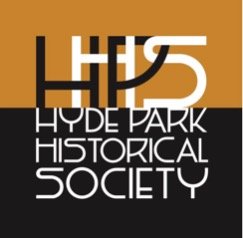White City
This is but a short introduction to the precursors and environments that set into motion the events and circumstances that led to arguably the greatest World event to date. More detailed information can be accessed by reading about the stories of the people who took part in the politics and planning itself.International expositions can trace their origins to the Great Exhibition of The Works of Industry of all Nations held in London in 1851.Each exhibition held after that set out to be larger and more spectacular then its predecessor. Chicago, which would eventually be granted the honor and responsibility of hosting the 1893 Exposition was no stranger to expositions or conventions. In 1847 the National River and Harbor Convention was held in Chicago which attracted new investors to the city. After the 1860 Wigwam in Chicago, which launched the presidency of Abraham Lincoln, nominating conventions became a regular happening. In 1873, just two years following the Great Fire, Chicago hosted annual fairs in the Inter-State Exposition Building which was razed to make room for the building which would host the World's Congress Auxiliary during the 1893 Expo and would later become the current home of the Chicago Art Institute.Where did the idea of a grand exposition celebrating the 400th Anniversary of Columbus's voyage to the "New World" come from? The jury is pretty much still out on this one and to be honest how will we ever know what ideas were NOT recorded for the use of history buffs everywhere? However, what we do know is that the concept may have originated as early as the Centennial Fair of 1876. In 1882 there were three instances that occurred at roughly the same time. In early 1882, The Baltimore Sun made the assertion that a celebration of the discovery of the New World and an international exposition would make a great combination. In February of 1882, Dr. Carlos Zaremba, a mexican citizen, made it known at the Cooper Institute of New York his idea of an international exposition celebrating the discovery of the New World to be held in Mexico City. Also in February of 1882, a letter from Dentist A.W. Harlan was printed in the Chicago Times expressing the same idea however naming Chicago as the most appropriate site.Zaremba continued talks in Washington D.C. as well as in Chicago catching the ear of Alexander D. Anderson in Washington and George R. Davis in Chicago. Davis who was a U.S. Representative for Illinois would eventually become Director-General of the World's Columbian Commission. Through the efforts and personal expenditure of money by Anderson a local Board of Promotion was formed which eventually became a national Board of which Anderson was appointed Secretary. In June of 1888 a bill was introduced in Congress entitled, "A Bill To Provide for a Permanent Exposition of the Three Americas at the National Capital in Honor of the Four Hundredth Anniversary of the Discovery of America". A grand idea! At least Washington thought so. Other cities were not so happy that Washinton D.C. had already been chosen for a location and began to lobby for their individual cities.According to Thomas B. Bryan, who would later become a Commissioner-At-Large of the Expo as well as Vice President of the World's Congress Auxiliary, a Chicago newspaper publisher named J.W. Scott had proposed the idea of a committee to lobby for the interests of Chicago be formed. He proposed that idea to then Chicago mayor DeWitt C. Cregier. On August 1, 1889 a Committee of Chicago's business, political and industry leaders met in Chicago City Council Chambers. After the meeting, the resolutions that were adopted were telegraphed all over the country.The four main contenders for location were Washington D.C., St. Louis, New York, and Chicago. It was decided that the cities would send delegates to Washington to argue their case before Congress. St. Louis was the first to fall by the wayside. Washington D.C. could not come up with enough private capital. New York had difficulties with providing a large enough location due to the opposition of New Yorkers to using Central Park. Chicago's delegates led by Thomas B. Bryan impressed Congress with its arguments of ample locations, unparalleled transportation resources, large amounts of private capital and its location as the virtual center of the United States at that time. On February 25, 1890, a joint resolution selected Chicago as the host city and President William Harrison approved of it on April 28, 1890.Two organizing bodies were immediately formed to oversee the planning, financing and execution. The Chicago Corporation which was formed to lobby for Chicago in Congress elected a Board of Directors, issued stock and elected Harlow N. Higinbotham, a partner of Marshall Field, its President. The World's Columbian Commission was made up of 2 commissioners from each state and territory appointed by President Harrison. U.S. Representative George R. Davis from Illinois was its Director General and Thomas Palmer from Detroit, MI its President.These brave souls had to bring from dream to reality the greatest international exposition ever known and had just over two years to do it!


